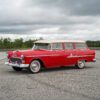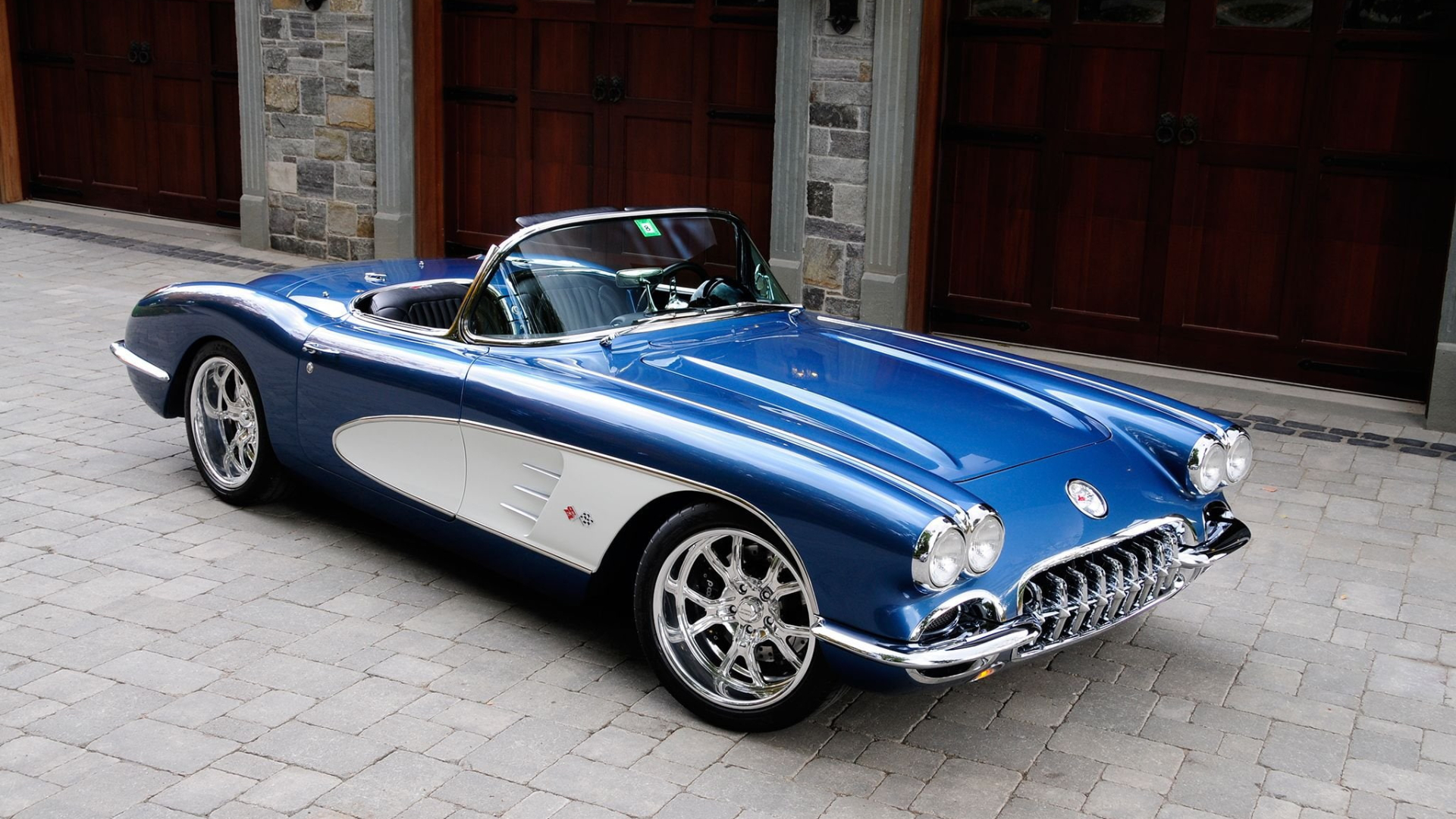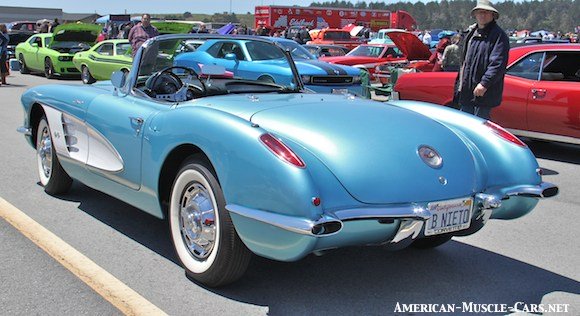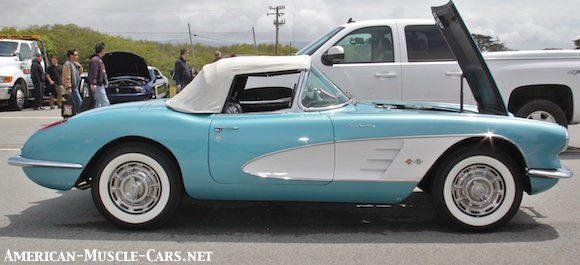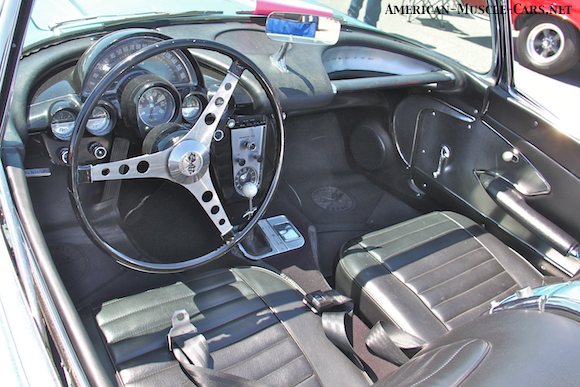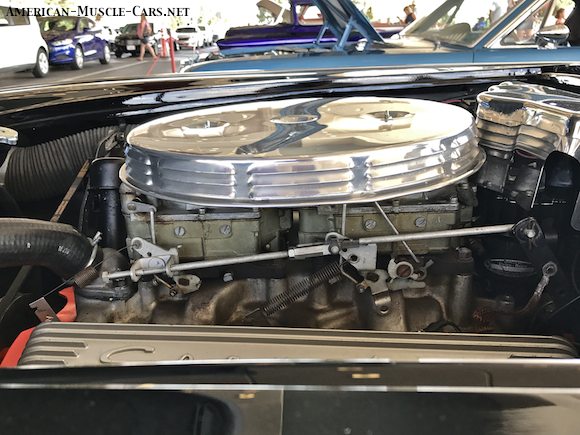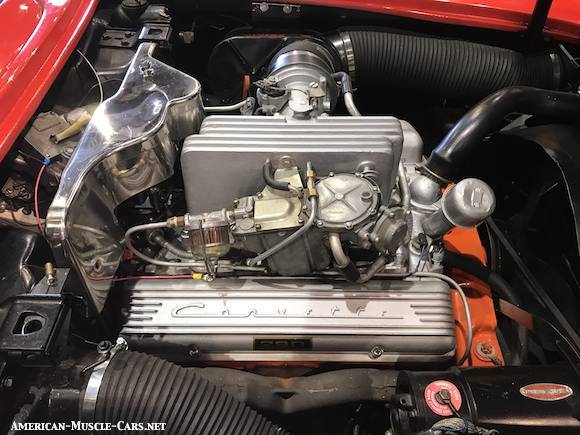1959 Chevrolet Corvette

1959 CHEVROLET CORVETTE CARRIES OVER FROM ’58
After the major facelift in 1958, things stayed pretty much as they were for the 1959 model year. Some 1958-only styling cues like the faux hood louvers and the chrome trunk spears were gone, cleaning up the lines nicely. But styling-wise, externally at least, most things carried over pretty much as is.
ABOVE & BELOW: This gorgeous 1959 Chevrolet Corvette was caught at the same show, but one year apart. Same car, same show, one year apart! Top-down, above was taken at the 2015 Pacific Coast Dream Machines Show, and the Top-up shot, below was taken at the 2014 Pacific Coast Dream Machines Show, both in Half Moon Bay CA.
1959 CHEVROLET CORVETTE UNIQUE FEATURES
There are very few, actually. 1959 was the only year a turquoise convertible top could be ordered. The interior was revised slightly from the ’58, the instrument graphics were revised, their faces made concave to reduce glare and a storage bin was added on the passenger-side. 4-speed cars got a new T-handle shifter with positive reverse lockout. Black interior became an option. Seat belts became standard equipment for the first time, as did dual exhaust, outside rearview mirrors, a tachometer and an electric clock. Lastly, and most uniquely, the ‘tuck-and-roll’ pleating on the seats runs side-to-side on the ’59, but front-to-back on the ’58 and the ’60.
1959 Chevrolet Corvette INTERIOR
1959 Chevrolet Corvette ENGINES
1959 CHEVROLET CORVETTE
270-HORSE 283 V8 w/DUAL 4-BARRELS
Corvette’s top-rated non-fuelie engine for 1959 was the Dual 4-barrel 270-horse 283 small block. Although the 348 Mark I Big Block was in use elsewhere in Chevy’s model line, no production Corvette would see a Big Block of any sort until 1965, with the Mark IV 396. In the meantime, they made do by pumping up their workhorse small blocks. In 1959, that was the 283 (the 327 wouldn’t arrive until 1962), and that included two Dual 4-barrel engines. One was of milder tune with a hydraulic cam, making 245 horses, and easily distinguishable (if still in stock form) by it’s chromed stamped-steel valve covers. The other had a more aggressive solid cam now making 270 horses, and identified by it’s finned cast-aluminum valve covers (as pictured below).
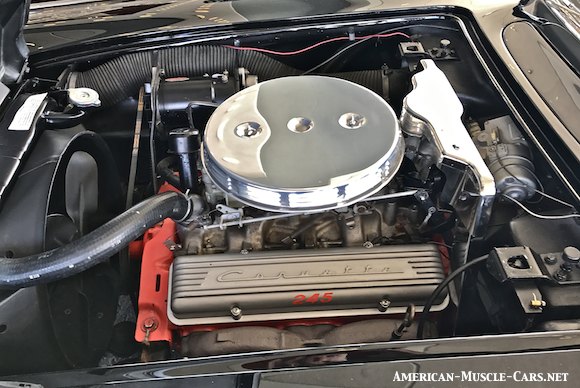
ABOVE: The 230-horse 283 was the only Corvette engine with a single 4-barrel.
BELOW: Two engines were offered with dual 4-barrel carburetors, one making 245hp (with hydraulic lifters) and one with 270hp (with solid lifters).
ABOVE: The top-of-the-line Corvette engine in the 50s was the “Fuelie”. Rochester ‘Ramjet’ mechanical fuel injection was ground-breaking for a car in this price range, back in 1957 when it was introduced. It made big power, loved to rev, and got better mileage than the dual-quad setup. But they were expensive to build and fussy to tune. The milder (hydraulic lifters) version made 250hp and the wilder one (with solid lifters) made 290hp.
1959 Chevrolet Corvette SPECIFICATIONS
| Production
Serial Numbers Base Price Wheelbase Overall Length Overall Width Overall Height Track, Front Track, Rear Weight Dist, F/R Curb Weight Fuel Capacity ENGINE SPECS: Engine Type Block Material Engine Family Bore & Stroke Displacement ENGINE OPTIONS: |
9,670 Convertibles
J59S100001 to J59S109670 $3,875.00 102.0 inches 177.2 inches 72.8 inches 51.6 inches 57.0 inches 59.0 inches 53% / 47% 3,092 lbs 16.4 US gallons OHV 90-degree V8 Cast Iron Chevrolet Small Block V8 3.875″ X 3.00″ 283 cubic inches |
| RPO
Horsepower Torque Compression Fuel System |
Base
230 @ 5,000 NA 9.5:1 1X4bbl |
469
245 @ 5,000 NA 9.5:1 2X4bbls |
469C
270 @ 5,000 NA 9.5:1 2X4bbls |
579
250 @ 5,000 305 @ 3,800 9.5:1 Fuel Inj |
579C
290 @ 5,000 NA 10.5:1 Fuel Inj |


